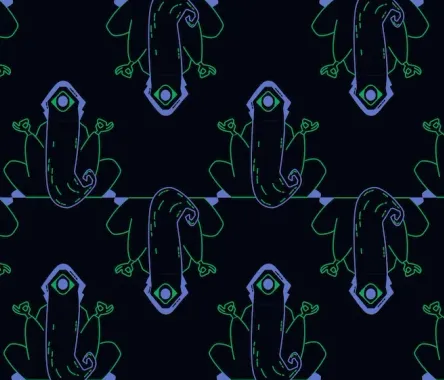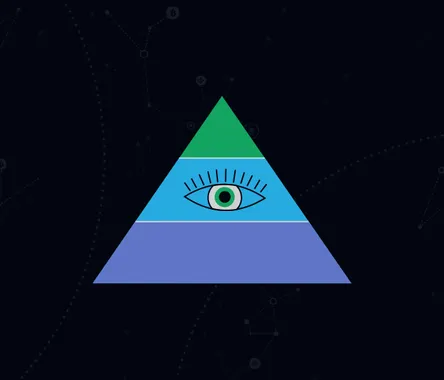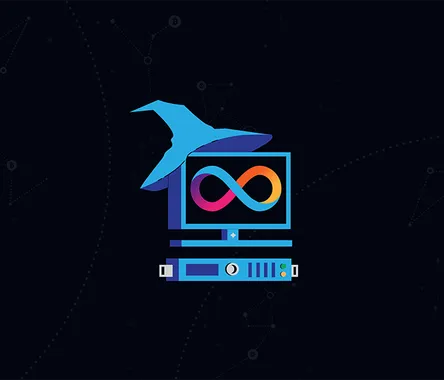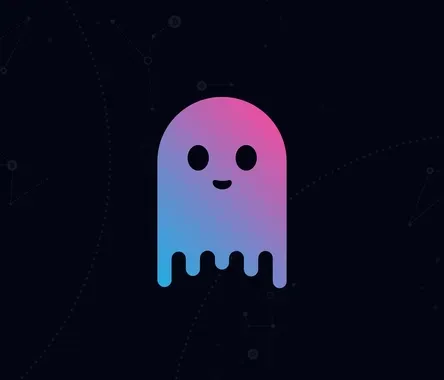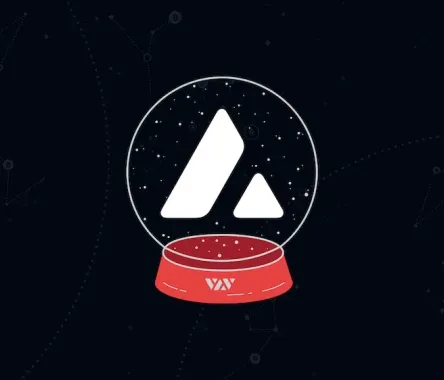What is Acala?
Acala is described as a specialized stablecoin and liquidity blockchain, designed to be cross-chain compatible and have future-proof forkless upgradeability. The project’s stablecoin protocol uses a multi-collateral-backing mechanism to provide Acala’s users with a stablecoin soft-pegged to the US Dollar. In essence, the protocol is a decentralized monetary reserve issuing a stable currency against a basket of reserve assets.
Acala’s stable currency aims to allow holders of its reserve assets to spend, trade, and access other services without being subject to price volatility while also retaining control over the reserve assets they have provided. The network’s assets include the Acala Dollar stablecoin – aUSD, reserve assets – DOT, LDOT – a form of liquid-staked DOT provided by Horna Protocol, and the Acala token – ACA, which is also the project’s native token.
Acala launched its testnet in October 2019. Its founders were not new to the Polkadot’s ecosystem having previously worked at the Laminar and Polkawallet projects. Eventually, the project’s mainnet was launched in December 2021 as a parachain on the Polkadot network.
How does Acala work?
Acala is built using the Substrate modular blockchain framework. It is fully compatible with any Ethereum-based dApp thanks to its Acala EVM+, a customized version of the Ethereum virtual machine.
The Acala approach to being EVM compatible includes emulating the Ethereum JavaScript SDK by implementing a web3 provider such as Bodhi.js instead of emulating the full Ethereum RPC node. The method called Acala EVM+ received an Open Grant from the Web3 Foundation and is still under development. A deeper dive into the concept is available on Acala’s Github page.
Acala has its own AMM and DEX and lets users swap and stake assets. An important feature that simplifies customers’ experience and overall interoperability of the platform is that the users can pay fees for their transactions in any currency supported by the platform.
Acala supports its own stable currency, aUSD, that can be backed by multiple assets added to the liquidity pools. The issuing of stablecoins is possible through Honzon Protocol. Users can borrow stablecoins against collateral using the CDP model, similar to how DAI stablecoins work. It means that various types of tokens can be used as collateral, including DOT, ACA, PolkaBTC, and KSM. Each aUSD equals 1 US dollar in value.
Another Acala creation, Homa Protocol, allows derivatives trading in the project’s ecosystem. Holders of Polkadot’s native tokens can stake their DOT to receive its liquid version, LDOT. Liquid tokens can be deposited as collateral to mint aUSD, while their staked DOTs bring them variable yield upon redemption.
Acala’s approach to governance includes employing various mechanisms that allow it to progressively decentralize and ultimately be controlled by the majority of the network’s stakeholders. Like Polkadot, the Acala governance framework comprises a Referenda chamber, a General Council, and a Technical Committee, which govern the network together.
Referenda represents a simple stake-based voting scheme that can be started by public proposals or council proposals, it has an enactment delay period associated with it, however, emergency proposals can be fast-tracked to have a shorter enactment period. The so-called Referenda chamber works together with a General Council appointed by the Acala Foundation to represent its decisions regarding the network’s runtime upgrades.
At the same time, any ACA token holder can propose any change to the network, its protocols, or the Acala Treasury, which gets collectively voted on in the Referenda chamber. Following that, the General Council “provides oversight with veto rights” to protect the best interest of the Acala network, by keeping it safe from proposals that may be found to be malicious or pose security risks.
There is also a Financial Council meant to oversee updates of the stablecoin’s protocol parameters and other protocol fee parameters. It gets elected by the General Council via a 2/3 approval rating. Finally, a Homa Staking Council, elected by ACA holders, oversees updates of Liquid Staking parameters, such as validator selection.
Acala has a so-called Oracle Collective, which elects Oracle operators and aims to solve the challenge of providing reliable, accurate, and decentralized oracles. The model is essentially a type of Proof-of-Authority that allows only trusted authorized operators to provide price feeds into the network. The model is to evolve into contemporary research and development on the so-called Oracle problem. Members of the Oracle collective are elected by the General Council via a 2/3 approval rating.
The project also has a Technical Committee tasked with fast-tracking emergency proposals that are marked as critical to the network’s operation, as well as delaying enactments and canceling dangerous proposals. The Acala technical committee is also elected by the General Council via a 2/3 approval rating.
How to use Acala?
The project consists of the Mandala Test Network which is described as a risk-free and value-free “playground”, allowing Acala users and developers to test the functionalities of the blockchain. The Mandala node’s RPC is available on Acala’s documentation webpage and the team reminds users that there is a testnet faucet channel in the community’s Discord server.
Besides Mandala, Acala also has a sister chain acting as an unaudited and experimental release of the Acala protocol on the Kusama network. The network is called Karura and it has its own economic value represented in its native KAR and KSM tokens, both of which can be used as reserve assets for its stablecoin.
For developers wishing to deploy their app, Acala has provided a detailed guide on using its EVM+.
Acala uses the SS58 Substrate-based chain address format, also utilized by Polkadot for its user’s accounts. The SS58 format is a modification of Base-58-check from Bitcoin, notably, it contains an address type prefix identifying an address as belonging to a specific network. For example, Polkadot addresses always start with the number 1, Kusama addresses always start with a capital letter, while generic Substrate addresses always start with the number 5. For this reason, Acala wallet addresses usually, but do not always start with the number 2. Similar to Polkadot’s Kusama, Acala’s sister-chain – Karura addresses start with a small letter.
The Acala wallet support includes Browser wallet solutions Acala DApp, Polkadot-JS, Talisman, and SubWallet, as well as mobile apps Polkawallet and Signer.
Acala fees are collected in any token supported by the platform but are ultimately settled in its native ACA token through its own Acala stablecoin liquidity pools.
The ACA token
ACA is the native token of the Acala network. Although its initial supply at the launch of the mainnet was to be set at 100,000,000, according to the project’s whitepaper, since April 6, 2021, the total supply of the token was increased 10 times to a total of 1,000,000,000, however, token distribution and token economics remained the same as the Acala chain and its ACA token were still not live at the time of the redenomination. The main benefit of the change was described to be avoiding the use of small decimals when dealing with ACA and making overall calculations easier.
Following the launch of the network, the total supply of ACA was minted and has since been kept stored in the ACA Reserve Pool to be distributed to the Acala Foundation, Seed Investment Partners, and IPO Participants, and the rest is to be sold to the public.
Among the token’s use cases is closing CDP (Collateralized Debt Position) positions created to generate aUSD stablecoins on the Acala network, through a so-called stability fee. Since the project allows its users to pay these fees in whatever token they prefer so long as it is supported by the platform, when users pay for their fees, their tokens are automatically exchanged for ACA via its built-in exchange. Once received, ACA is burned and removed from the total supply of the coin, permanently.
Since all active CDP positions are constantly monitored by the system, and ACA holders vote for a liquidation ratio for each type of collateral, once the limit is reached, and a CDP has been deemed risky, it gets automatically liquidated by the system in a Collateral Auction mechanism, where a liquidation penalty paid in aUSD is deducted from the collateral sales. This penalty then gets used to purchase ACA tokens from the exchange by the system, and they are once again burned and removed from the total supply of the coin, permanently.
ACA is also meant to be a governance token, giving its holders rights to propose network upgrades and risk parameter adjustments, approved or declined by the General Council.
The token’s final use case comes in potential contingency situations, where a sudden price collapse of a collateral asset may result in under-collateralized CDP positions. In these cases, ACA is to be automatically diluted and sold on the market for system recapitalization.
Is Acala safe?
Acala Foundation is the team of developers responsible for the creation of Acala. It was established by members of the Laminar and Polkawallet projects, also operating on Polkadot.
The Acala co-founders include Ruitao Su, Bette Chen, and Bryan Chen, the co-founders of Laminar and Fuyao Jiang from Polkawallet. The Acala Foundation team is distributed around the world and based in New Zealand, China, Europe, Brazil, and the United States. Acala was audited by Trail of Bits, SlowMist, and Security Research Labs in 2020 and 2021.
On August 14, 2022, the Acala team identified a configuration issue on the Honzon protocol affecting the aUSD stablecoin. The misconfiguration was in the iBTC/aUSD liquidity pool which went live earlier the same day and resulted in error mints of a significant amount of aUSD. Due to the error, the over-minted aUSD was transferred to the wallet addresses of LPs when they claimed their LP rewards.
The Acala team announced that all wallet addresses that received the erroneously minted aUSD have been since identified with on-chain activity tracing underway. 99% of the more than 3 billion erroneously minted aUSD were said to be still on the Acala parachain, while the rest was swapped for ACA and other tokens and transferred out of the network. All of the traced funds functionality to transfer was disabled following an Acala governance decision taken by the community’s collective.
The funds were traced to 16 wallet addresses, with a detailed report on the tracing process and accounts in question published on the day of the incident in the project’s governance forum.
In a try to make users return their aUSD, the team offered a bounty of up to 5% to any party that returns at least 95% of total funds transferred by it out of the Acala network.
On August 16, 2022, the Acala network passed a community governance referendum and at block 1,652,829, the Honzon protocol got back 1,292,860,248 aUSD erroneously minted tokens to burn them.
In the following days, Acala managed to trace more of its lost, over-minted, stablecoins and shared that 1.682 billion aUSD remains on the 16 addresses along with other tokens swapped by them. A detailed summary of the team’s actions and findings following the incident was published under the thread that started following the Acala exploit in its governance forum earlier.
The incident triggered a proposal for expedited referenda to be posted on the community’s governance forum, suggesting changes to the time periods set in Acala’s governance process.
Ecosystem & Partners
Acala has strong ties to Laminar and Polkawallet projects being initially created by members of their teams. The project was developed with the support of the Web3 Foundation receiving five grants from the organization so far.
Acala lists Arrington XRP Capital, CMS Holdings, CoinFund, Coinbase Ventures, Polychain Capital, Pantera Capital, ParaFi Capital, Spartan Group, and others among its investors.
Along with the more recent collaborations of the project are companies such as Astar, StellaSwap, Swim, Pendulum, and Amplitude. Weekly updates on the Acala ecosystem and partnerships established by the project are available on its Medium blog page.
What's next?
Acala’s launch was divided into four phases, three of which have so far been completed with some tasks left to be finished soon. The only uncompleted tasks so far are moving DOT to the Acala Treasury, left from the second phase of the project’s launch, and enabling EVM+, the final stage of the Acala roadmap’s third phase.
Currently, the project is focused on its final launch phase named “Enable full democracy”. There is only one task in this phase, but it requires some checkpoints to be met before the project can transition to its next stage of governance – Elected Council. The checkpoints include having all DeFi protocols on the network bootstrapped, running with high stability and security for a reasonable period, the network having a sufficient amount of sustainable liquidity to power the protocols, and others.
Links
https://acala.discourse.group/c/acala/16
https://wiki.acala.network/
https://github.com/AcalaNetwork/Acala-white-paper/blob/master/Acala_Whitepaper.pdf
